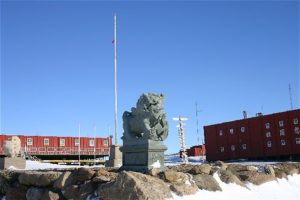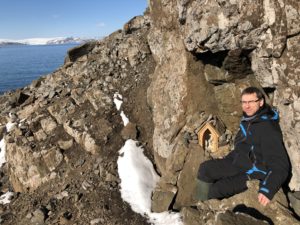 A small Czech chapel has been placed on Febr. 21, 2019 at 62°14,784′ South, 58°58,891′ West in Antarctica during an expedition to the ECO Nelson Base in the South Shetlands on the Nelson Island as already reported on Nov. 22-2019 (http://www.waponline.it/new-chapel-at-eco-nelson-station-wap-cze-o1/).
A small Czech chapel has been placed on Febr. 21, 2019 at 62°14,784′ South, 58°58,891′ West in Antarctica during an expedition to the ECO Nelson Base in the South Shetlands on the Nelson Island as already reported on Nov. 22-2019 (http://www.waponline.it/new-chapel-at-eco-nelson-station-wap-cze-o1/).
Eco Nelson Base (WAP CZE-Ø1), will be renamed in the future. Actually it is under the protection of Ministry of Foreign Affairs, owned and administered by the Czech Antarctic Foundation.
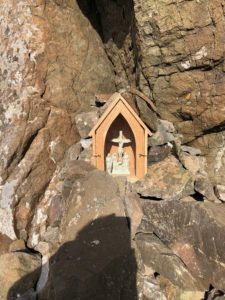 The Chapel -as told WAP by its builder Prof. Ladislav Janíček– was born from an initiative of himself (Prof. Ladislav Janíček in the pic above) with the support of his “Antarctic” colleagues and friends, in particular Dušan Jamný, a Chairman of the Governing Board and actually a Founder of the Czech Antarctic Foundation, as a sort of thanks giving.
The Chapel -as told WAP by its builder Prof. Ladislav Janíček– was born from an initiative of himself (Prof. Ladislav Janíček in the pic above) with the support of his “Antarctic” colleagues and friends, in particular Dušan Jamný, a Chairman of the Governing Board and actually a Founder of the Czech Antarctic Foundation, as a sort of thanks giving.
The building process of the Chapel, from the beginning till its final placement, was supported by many friends but, at least shortly I would like to mention Dušan Jamný, Zdeněk Musil (picture below) and Pavel Kapler, who helped a lot on site to find the appropriate safe place and work on it. The assembling of the chapel body was done by Michal Janeček and the interior statues inside are by Tomáš Medek, Jiří Pec and Milan Houser.
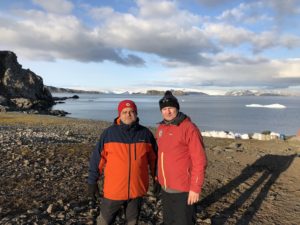
-There is an hidden content in a capsule put inside the Chapel: ethos and message, was designed and made by myself- said Ladislav Janíček -as my personal thanks giving-.
The time capsule contains:
– St. Wenceslaus choral and Agnus Dei Choral: both compositions are documented by the notes and recording. I wrote them and recorded with the support of Vox Iuvenalis choir (40 voices)
– St. Agnes Ode and St. Ludmila Ode, which I wrote to celebrate
– Graduale – celebrating values of the brotherhood of people in the community and all those who wants to open their hearts for peace and good as well as for others
– Two other my orchestral compositions: St. Wenceslaus Ode and St. Ladislaus Ode
The Chapel is though devoted to the Czech saints who are part of our history: St. Wenceslaus, St. Ludmila and St. Agnes of Bohemia. They come from the royal house of Přemysl, which ruled in the Czech lands from the beginnings of the Bohemia till 1306. St. Wenceslaus is one the first Czech saints and he was a duke of Bohemia assassinated in year 928. St. Ludmila was grandmother of St. Wenceslaus. She was a spouse of the first baptised duke of Bohemia of the Premysl house, Bořivoj I. She was assassinated in 921. Agnes of Bohemia was sister of the king Wenceslaus I and after her resignation on becoming a spouse of the Roman emperor she became a prioress of convent and played an important role for the Czech kingdom after the death of Přemysl Otakar II in 1278 at the battle on the Moravian Field, when the Czech lands were occupied and plundered; his successor, later king Wenceslaus II, was imprisoned. She died in 1281; was canonized in 1989 and became a symbol of the liberation.
Czech Antarctic Foundation was established to support the Czech Antarctic research, but also to promote the Antartic research worldwide.
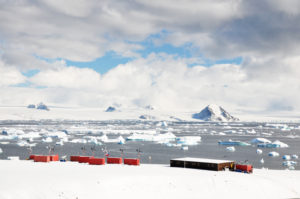
It means the base is available also for everyone who might be interested to stay there and conduct research activities. The Czech Antarctic Foundation also plans to upgrade the base infrastructure and build a more sophisticated station and its necessary infrastructure.
In an interview for WAP, Prof. Ladislav Janíček , explains that Dr. Dušan Jamný is the engine of the Foundation activities and also a director of Czechoslovak Ocean Shipping, which provide a complex logistic support of the Czech Antarctic program including the transport. The honorary president of the Foundation is Pavel Prošek, the founder of the first Czech scientific Station in Antarctica, the Johann Gregor Mendel Base (WAP CZE-NEW pic aside) on James Ross Island, managed by Masaryk University.
TNX Prof. Ladislav Janíček
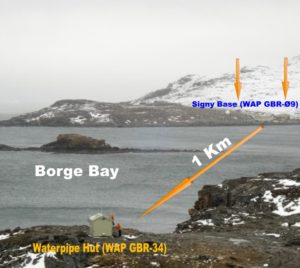 Where exactly are VP8PJ‘s planned to stay when at the South Orkneys DX-pedition?
Where exactly are VP8PJ‘s planned to stay when at the South Orkneys DX-pedition?
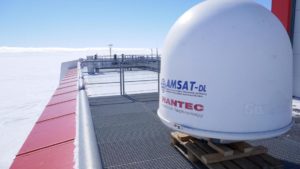 The new Satellite Equipment for QO100 was installed at Neumayer III by a team of radio specialists, as reported on CQ-DL 2/2020, Volker, DL8JDX reports.
The new Satellite Equipment for QO100 was installed at Neumayer III by a team of radio specialists, as reported on CQ-DL 2/2020, Volker, DL8JDX reports.
 China’s fifth station is designed to be a year-round research base which could accommodate 80 people in the summer and 30 people in winter. The new base will provide year-round support for researchers conducting tasks such as observations of land, ocean, atmosphere, ice shelf and biology, establishment of an observation and monitoring network in the Antarctic, and survey of marine environmental protection.
China’s fifth station is designed to be a year-round research base which could accommodate 80 people in the summer and 30 people in winter. The new base will provide year-round support for researchers conducting tasks such as observations of land, ocean, atmosphere, ice shelf and biology, establishment of an observation and monitoring network in the Antarctic, and survey of marine environmental protection. n February 7, 2018, during China 34th Antarctic Expedition, Chinese researchers laid the foundation and started to build its fifth Antarctic Research Station on Inexpressible Island transferring large engineering equipments from China’s research icebreaker Xuelong. It is expected that full construction will be completed in 2022.
n February 7, 2018, during China 34th Antarctic Expedition, Chinese researchers laid the foundation and started to build its fifth Antarctic Research Station on Inexpressible Island transferring large engineering equipments from China’s research icebreaker Xuelong. It is expected that full construction will be completed in 2022. The Artigas Antarctic Scientific Base was visited last Thursday by the Estonian delegation, headed by the country’s President, Kersti Kaljulaid, within the framework of the 200th Anniversary of the Imperial Russian Navy expedition.
The Artigas Antarctic Scientific Base was visited last Thursday by the Estonian delegation, headed by the country’s President, Kersti Kaljulaid, within the framework of the 200th Anniversary of the Imperial Russian Navy expedition.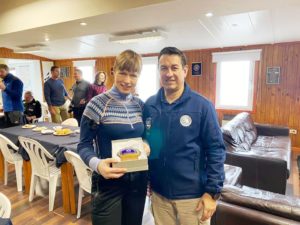 The freezing Antarctic morning, covered by a mist that made almost impossible to see beyond a few meters towards the horizon and fully covering the Collins Glacier did not prevent the President of Estonia, to visit the cold continent and stop at the Uruguayan Antarctic Scientific Base-Artigas (WAP URY-Ø1). After a warm reception by the Uruguayan staff that, in few minutes, made the visitors forget the cold, Uruguayans and Estonians shared a welcome breakfast with typical Uruguayan products.
The freezing Antarctic morning, covered by a mist that made almost impossible to see beyond a few meters towards the horizon and fully covering the Collins Glacier did not prevent the President of Estonia, to visit the cold continent and stop at the Uruguayan Antarctic Scientific Base-Artigas (WAP URY-Ø1). After a warm reception by the Uruguayan staff that, in few minutes, made the visitors forget the cold, Uruguayans and Estonians shared a welcome breakfast with typical Uruguayan products.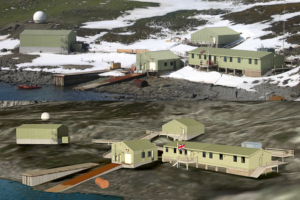 The British Antarctic Survey has a Base; Signy Research Station (WAP GBR-Ø9), established in 1947at 60°43′ Sout, 45° 36′ West, Factory Cove, Borge Bay, Signy Island, South Orkney Islands
The British Antarctic Survey has a Base; Signy Research Station (WAP GBR-Ø9), established in 1947at 60°43′ Sout, 45° 36′ West, Factory Cove, Borge Bay, Signy Island, South Orkney Islands “Marka” Joint-Stock Company has recently made postal products dedicated to the 200th Anniversary of the start of the Bellingshausen and Lazarev expedition to Antarctica.
“Marka” Joint-Stock Company has recently made postal products dedicated to the 200th Anniversary of the start of the Bellingshausen and Lazarev expedition to Antarctica. For example, the “Vostok” and “Mirny” sloops are depicted on the new postage stamps; the fields of the postal block are bordered by the landscape of Antarctica. Models of sailing sloops, complemented by the expedition’s route map, also illustrate unmarked postcards. A souvenir pack includes a postal block and a vignette, as well as a first day envelope with cancellation for Moscow.
For example, the “Vostok” and “Mirny” sloops are depicted on the new postage stamps; the fields of the postal block are bordered by the landscape of Antarctica. Models of sailing sloops, complemented by the expedition’s route map, also illustrate unmarked postcards. A souvenir pack includes a postal block and a vignette, as well as a first day envelope with cancellation for Moscow. A small Czech chapel has been placed on Febr. 21, 2019 at 62°14,784′ South, 58°58,891′ West in Antarctica during an expedition to the ECO Nelson Base in the South Shetlands on the Nelson Island as already reported on Nov. 22-2019 (
A small Czech chapel has been placed on Febr. 21, 2019 at 62°14,784′ South, 58°58,891′ West in Antarctica during an expedition to the ECO Nelson Base in the South Shetlands on the Nelson Island as already reported on Nov. 22-2019 ( The Chapel -as told WAP by its builder Prof. Ladislav Janíček– was born from an initiative of himself (
The Chapel -as told WAP by its builder Prof. Ladislav Janíček– was born from an initiative of himself (

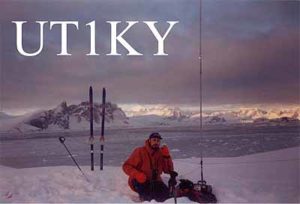 From the 1st to the 28th of February Ukrainian SES will join the WW Antarctic celebrations for the 200th Anniversary of the epic discover by Faddey Bellingshausen, captain of the vessel “Vostok” and Mikhail Lazarev commander of “S/V Mirny”.
From the 1st to the 28th of February Ukrainian SES will join the WW Antarctic celebrations for the 200th Anniversary of the epic discover by Faddey Bellingshausen, captain of the vessel “Vostok” and Mikhail Lazarev commander of “S/V Mirny”. Both station will join the
Both station will join the 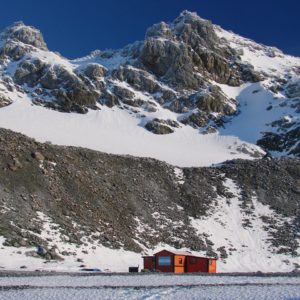 This Refuge is a resting place where to take shelter in case of bad conditions or any other problematic situations with the weather or navigation. It lays inside the perimeter of Base Orcadas (WAP ARG-15) which is located on Laurie Island where at Cormoràn Point, lies the homonymous refuge of Argentine flag (see pic aside).
This Refuge is a resting place where to take shelter in case of bad conditions or any other problematic situations with the weather or navigation. It lays inside the perimeter of Base Orcadas (WAP ARG-15) which is located on Laurie Island where at Cormoràn Point, lies the homonymous refuge of Argentine flag (see pic aside). -Professionally speaking, all fine here at Concordia- says Marco IAØ/DK5SQX –Our LIDAR instrument (Optical Radar used to make high-resolution maps, with applications in geodesy, geomagnetics, geography, geology and many other fields), works well and produce excellent results-.
-Professionally speaking, all fine here at Concordia- says Marco IAØ/DK5SQX –Our LIDAR instrument (Optical Radar used to make high-resolution maps, with applications in geodesy, geomagnetics, geography, geology and many other fields), works well and produce excellent results-. The main problem is that the Radio room is the center of the Base operations, and I can’t use it during the Base time work. In addition I must be followed by one of the radio room responsible and not only that is available to make some extra time watching me when I call CQ, particularly at night time!
The main problem is that the Radio room is the center of the Base operations, and I can’t use it during the Base time work. In addition I must be followed by one of the radio room responsible and not only that is available to make some extra time watching me when I call CQ, particularly at night time!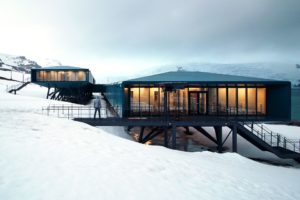 The modular research facility, located in King George Island in the Keller Peninsula, has been designed by Estudio 41, the Brazilian project houses labs, operations and living quarters, and could be mistaken for an art museum or boutique hotel
The modular research facility, located in King George Island in the Keller Peninsula, has been designed by Estudio 41, the Brazilian project houses labs, operations and living quarters, and could be mistaken for an art museum or boutique hotel Apparently the fire started in a machine room housing energy generators before destroying the entire station, which had been built in 1984. Fifty-nine people were stationed at the base on King George Island when the fire broke out.
Apparently the fire started in a machine room housing energy generators before destroying the entire station, which had been built in 1984. Fifty-nine people were stationed at the base on King George Island when the fire broke out. Release 1.35 (Jan. 1st 2020) of both WAP-WACA and WAP-WACA directories are now loaded on the Download section.
Release 1.35 (Jan. 1st 2020) of both WAP-WACA and WAP-WACA directories are now loaded on the Download section.
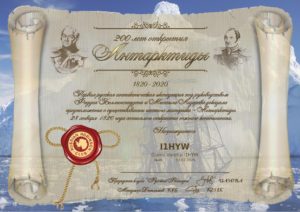
 R2ØØANT Special event Award with pictures and rules is now published on WAP website at:
R2ØØANT Special event Award with pictures and rules is now published on WAP website at: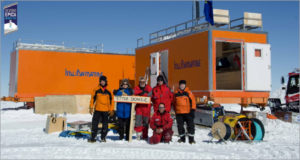 75° 21’ 54.5” South, 122° 24′ 49.3” East, on the Eastern Antarctic Plateau, , approximately 40 km at SW from Concordia Research Station (WAP MNB-Ø3) , Little Dome C (aka know as Dome Circe, Dome Charlie or Little Concordia) is the site of ice core drilling by field teams of several nations.
75° 21’ 54.5” South, 122° 24′ 49.3” East, on the Eastern Antarctic Plateau, , approximately 40 km at SW from Concordia Research Station (WAP MNB-Ø3) , Little Dome C (aka know as Dome Circe, Dome Charlie or Little Concordia) is the site of ice core drilling by field teams of several nations.
 Little Dome C Field Camp was established at an elevation of 3,233 meters (10,607 ft) above sea level, is one of several summits or “domes” of the Antarctic Ice Sheet, 1200 km from the coast, with an ice thickness of 2643 m and with an average annual temperature of -55°C.
Little Dome C Field Camp was established at an elevation of 3,233 meters (10,607 ft) above sea level, is one of several summits or “domes” of the Antarctic Ice Sheet, 1200 km from the coast, with an ice thickness of 2643 m and with an average annual temperature of -55°C.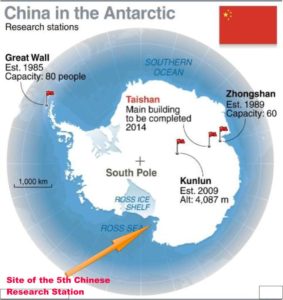 China is now building the country’s first permanent airport in the South Pole which will provide logistical support to scientists and enhance airspace management in Antarctica.
China is now building the country’s first permanent airport in the South Pole which will provide logistical support to scientists and enhance airspace management in Antarctica.